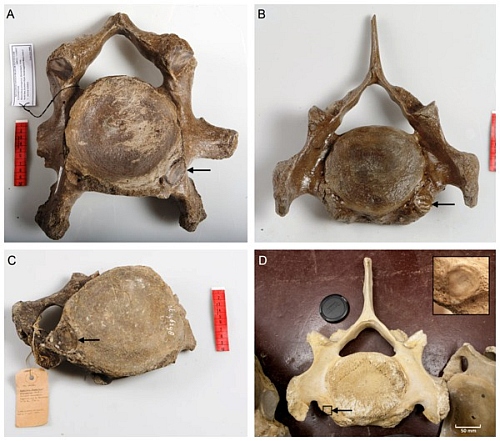Last month, we published “Extraordinary incidence of cervical ribs indicates vulnerable condition in Late Pleistocene mammoths”, which received quite a bit of attention in the press. In this article, Frietson Galis and her group describe the presence of a cervical rib in Woolly mammoths providing some clues about their decline and eventual extinction.

We felt it would be informative to ask Dr Galis how she became interested in cervical ribs in mammoths. She told us that she was in fact interested in cervical ribs in all mammals!

“Such a rib is attached to the seventh vertebra and this signifies a change of the normally extremely constant number of neck vertebrae from 7 into 6. Giraffes with long necks have 7 neck vertebrae and the short-necked dolphins also. Ribs are normally only attached to thoracic vertebrae and the presence of a rib on the seventh vertebra indicates a change of identity of a neck vertebra into a thoracic one. Study of exceptional mammals with an aberrant number of neck vertebrae has taught us that this change almost unavoidably comes with side effects and congenital anomalies. Thus, finding cervical ribs is always interesting for me and in the case of the Woolly mammoth it is extra exciting, as it provides us with unexpected insights into their condition before getting extinct.”
Dr Andrew Farke (Academic Editor on this article) also thinks this study generates some cool ideas to test. “This work is interesting because it uncovers a neat potential line of future research—developmental anomalies in animals under environmental stress”, he said. “Although this type of work is still in its infancy, I am excited to see how it develops. I do wonder if these sorts of anomalies can be used in studies of contemporary animals, too—perhaps for species of strong conservation importance”.
We couldn’t agree more with Dr Farke, and also hope that in the near future more researchers will use fossils to study developmental pathologies.
We encourage you to check out some of our other paleontology publications in PeerJ.

